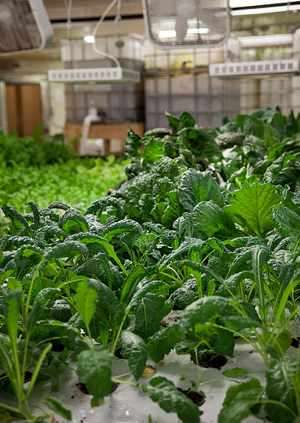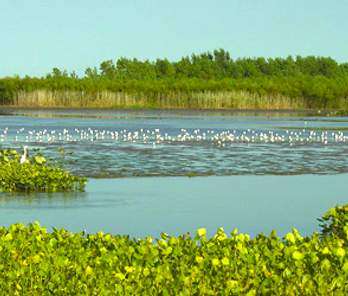On the third floor of an old meat-packing plant is a humid hothouse filled with rows of greens and sprouts, even exotic white strawberries. Nearby, in large barrels swim dozens of tilapia, fish native to tropical regions.
"The Plant" is a leading example for urban vertical farming using old warehouses, where plants and fish are raised symbiotically, with a closed-loop system that uses all waste toward the production of food. Using "aquaponics", the water containing fish excrement is used to feed and fertilize the plants, which then filters the water back to the fish through a series of pipes.
One-third of The Plant will hold aquaponic growing systems and the other two-thirds will incubate sustainable food businesses — such as a bakery, beer brewery and mushroom farm — by offering low rent, low energy costs, and a licensed shared kitchen. The Plant will create 125 jobs in Chicago's economically distressed Back of the Yards neighborhood – but, remarkably, these jobs will require no fossil fuel use. Instead, The Plant will eventually divert over 10,000 tons of food waste from landfills each year to meet all of its heat and power needs.
Funded in part by $1.5 million in grant money from the Illinois Department of Commerce and Economic Opportunity, The Plant will install an anaerobic digester and a combined heat and power system to operate completely off the grid. By 2015, the completely enclosed, odorless digester will consume 27 tons of food waste a day, including all of the waste produced in the facility and by neighboring food manufacturers. The digester will capture all of the methane from that waste, to provide heat and 400 kWh of electricity.
The Plant is operated under a what's called a social enterprise model. This means there is a non-profit and for-profit side, but both are aimed at socially and environmentally responsible goals. For more information, visit their website: www.plantchicago.com
(WATCH the great video below, and Read a story about the founders at ABC News)










Be the first to comment